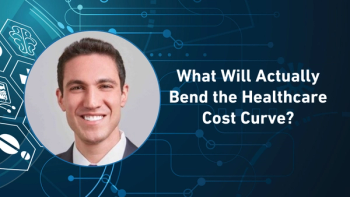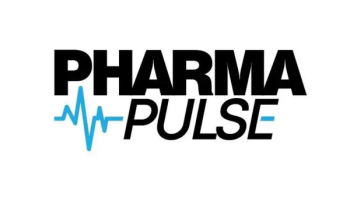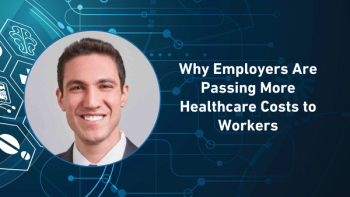
AI-Powered Counterfeit Drug Schemes Pose Growing Threat to Patient Safety
In the first part of his Pharma Commerce video interview, Mark Lee, MarqVision’s founder and CEO, warns that counterfeiters are using generative AI to clone pharmaceutical packaging, build convincing fake websites, and manipulate search results. rapidly outpacing enforcement efforts and putting patients at serious risk.
In a video interview with Pharma Commerce, Mark Lee, MarqVision’s founder and CEO, highlights the rapid growth and increasing sophistication of the counterfeit pharmaceutical market, driven in large part by bad actors leveraging artificial intelligence (AI). Counterfeiters are now using AI to replicate authentic pharmaceutical packaging with high accuracy, build convincing fake websites, and manipulate search algorithms—including SEO—to lure vulnerable patients. Generative AI tools make it easier than ever to clone legitimate sites, trick search engines, and present fraudulent products as genuine.
Lee emphasizes that counterfeit pharmaceuticals pose a far greater threat than other counterfeit goods, such as luxury handbags, because fake drugs directly endanger patient health and bypass stringent safety regulations. Consuming these unregulated substances can lead to severe health consequences, making counterfeit medications both a public health crisis and a criminal enterprise.
According to Lee, these bad actors are evolving at an alarming pace—so quickly that even advanced anti-counterfeiting teams struggle to keep up. At MarqVision, the company reportedly employs top-tier engineers, including former Google software engineers, to develop AI tools capable of identifying and shutting down these threats. However, the speed and adaptability of counterfeiters make the challenge ongoing and complex.
Lee explains that it’s now possible to completely copy an official pharmaceutical company’s website, such as Pfizer.com, within seconds using code-replication tools. These fake sites often use slightly altered domain names—like “Pfizer.in” or “Pfizermedications.com”—and are nearly indistinguishable from the originals. As a result, the proliferation of such sites is growing, amplifying the risks to patients who may unknowingly purchase and consume counterfeit drugs.
Ultimately, Lee underscores that the combination of advanced AI tools and the high stakes of counterfeit pharmaceuticals is creating a rapidly evolving threat landscape—one that demands equally sophisticated and fast-moving countermeasures to protect consumers and maintain the integrity of the drug supply chain.
He also comments on the specific vulnerabilities in the global pharmaceutical supply chain that are most commonly exploited by counterfeiters; the key advantages of using AI-powered systems to detect and intercept counterfeit drugs compared to traditional anti-counterfeit methods;the role healthcare companies and regulators play in combating counterfeit medicines; and much more.
A transcript of his conversation with PC can be found below.
PC: How has the scale and sophistication of the counterfeit pharmaceutical market evolved in recent years, particularly with the use of AI by bad actors?
Lee: I think one of the most alarming trends that we see is that these counterfeiters are getting more sophisticated over time, and one of the big leverages that these counterfeiters now have is obviously AI. These counterfeiters are using AI to replicate pharmaceutical packaging and set up convincing fake websites, and even manipulate search algorithms, including SEO (search engine optimization). There are many tools out there that you can use to manipulate the search results using AI, and they're using all these tools that are available, the GenAI tools, to target these vulnerable patients.
I don't have to even go too much into this but the fake drug problem is a bigger problem even inside the counterfeits kind of problem, because obviously, it targets these patients, it threatens patient and consumer safety, and it really bypasses all of these stringent health regulations. If you see a fake Louis Vuitton bag, that is a big commercial problem, and sometimes, that indirectly feeds into these criminal organizations.
The impact of counterfeited drugs is much bigger because people actually consume these unknown substances. As these bad actors get sophisticated, they set up these fake websites, and rebuild these packaging in a way that's so convincing—that’s a very big health crisis. We use our AI technology to tackle these problems, but the speed at which these bad actors are evolving is actually very quick and very fast.
At MarqVision, we internally have the best engineers in the world. We have Google software engineers and people like that. These bad actors are moving at a speed that—even for us—it’s difficult to catch up. It is definitely an alarming trend, and I'm sure you've seen this somewhere, but you can actually just copy and paste the pharmaceutical brands website—for example, Pfizer.com—and then you can just submit that in one of these five-coding websites, and they will just recreate everything on that website in a matter of five seconds. We're seeing more and more of these fake websites pop up. It'll say Pfizer.in or you Pfizermedications.com, some fake website. It looks convincing because it's a total copy of the original website. That's something that we see more and more.
Newsletter
Stay ahead in the life sciences industry with Pharmaceutical Commerce, the latest news, trends, and strategies in drug distribution, commercialization, and market access.



